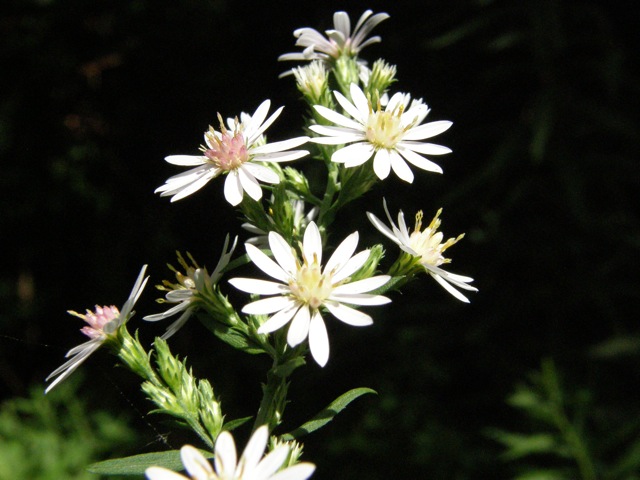Asteraceae, the daisy, sunflower or composite family.
Description:
Plant:
Erect, smooth, branching stems, 1'-5' high, with loose terminal clusters of
small, white, flower heads, borne mostly one one side of the branches.
Perennial.
Flowers:
Small, white flower heads, about 1/2", with 9-15 rays, borne in loose clusters,
generally on one side of the branch. Centers are initially yellow, turning
reddish purple with age, and flowers with both centers are
typically intermixed.
Leaves:
Alternate, ovate to lanceolate, sometimes toothed, 2"-6" long.
Fruit:
Blooming:
August-October
Habitat:
Fields, waste areas, thickets.
Comments:
The common name refers to the fact that both yellow- and purple-centered
flowers tend to be intermixed on the same plant.
This plant is one of several closely related species that are difficult to
distinguish, and that probably interbreed. Exact species boundaries
are thus hard to define.
It has fewer rays than some of the other common small white asters.
The plant is one of the North American asters formerly placed in the
genus Aster that have been placed in new genera,
Symphyotrichum in this case, on the basis of genetic studies.
Aster is now almost exclusively a European genus.
Where to find it:
I found a single example of this plant on the north-east shore of the pond.
Presumably there are others.
